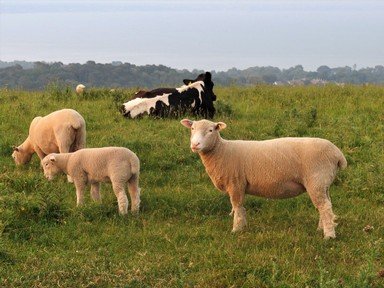Quiz Answer Key and Fun Facts
1. To start with the basics, which of these can cause disease in livestock?
2. Screwworm is a disease caused by screwworm flies depositing their eggs in the open wounds of animals. What method was used to eradicate screwworm in several countries in North and South America?
3. H5N1 Virus is better known as what?
4. In 2001, an outbreak of foot and mouth disease led to the slaughter of over 6 million animals in what country?
5. In the United States, infectious disease outbreaks must be reported to what individual or organization?
6. Ovine catarrhal fever is a viral disease that primarily affects sheep. What is its more common name, which reflects one of its possible symptoms?
7. What is an important step that governments in poorer countries can do to help contain outbreaks of contagious livestock disease?
8. Hog cholera, also known as classical swine fever, is a viral disease spread between pigs through blood, saliva, and other secretions. How are infected animals usually dealt with?
9. The Leptospira interrogans bacteria can infect many species, including humans. What disease does it cause?
10. No quiz on foreign animal disease would be complete without a question on bovine spongiform encephalopathy (BSE), or "mad cow disease". With BSE, the cause of illness is accumulations of misfolded proteins in the central nervous system. What are these proteins known as?
Source: Author
Lieberkuhn
This quiz was reviewed by FunTrivia editor
crisw before going online.
Any errors found in FunTrivia content are routinely corrected through our feedback system.


